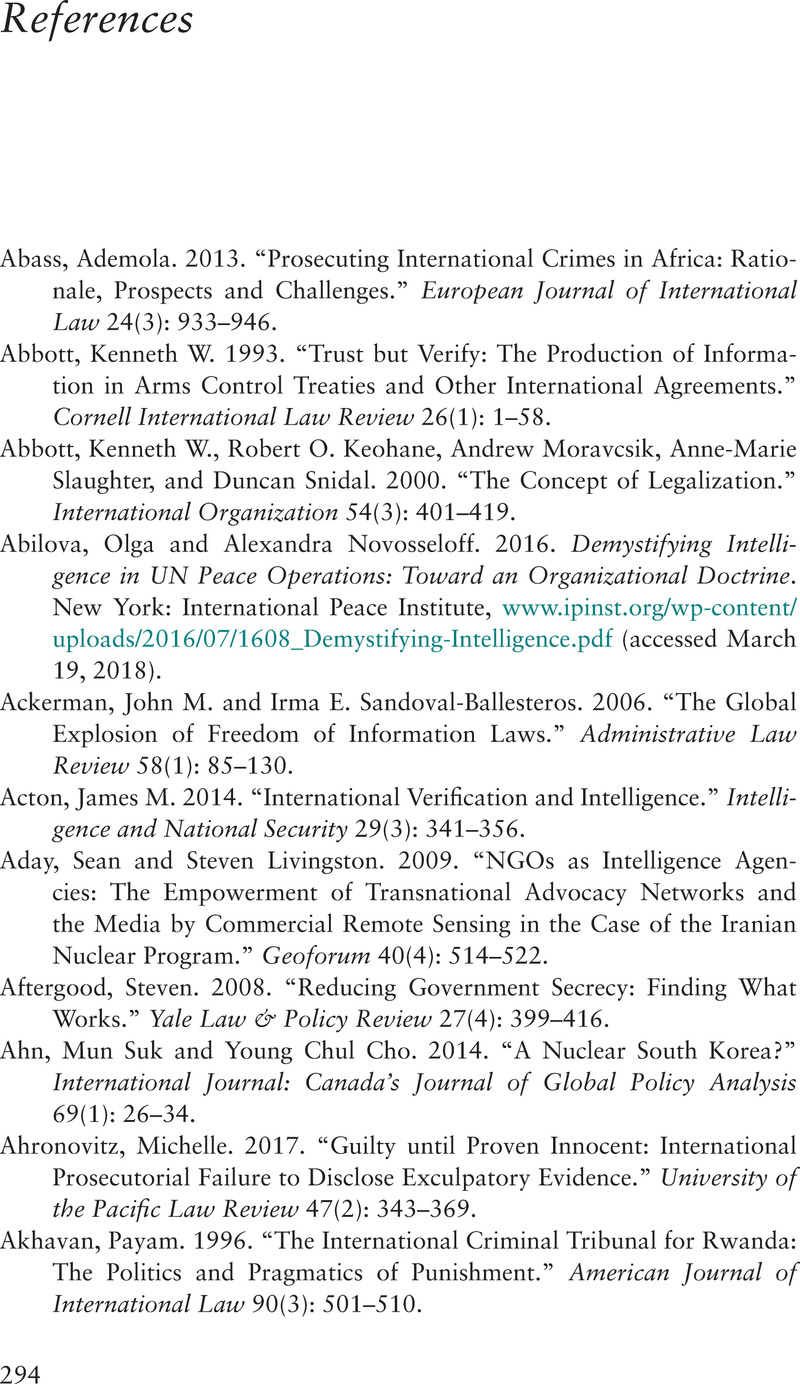Book contents
- Frontmatter
- Contents
- Figures
- Tables
- Acknowledgments
- 1 Introduction
- 2 Theory
- 3 Sensitive Information in Global Governance: The Past and the Present
- 4 Nuclear Proliferation
- 5 International Trade
- 6 War Crimes
- 7 Foreign Direct Investment
- 8 Conclusion
- References
- Index
- Cambridge Studies in International Relations
- References
References
Published online by Cambridge University Press: 05 June 2020
- Frontmatter
- Contents
- Figures
- Tables
- Acknowledgments
- 1 Introduction
- 2 Theory
- 3 Sensitive Information in Global Governance: The Past and the Present
- 4 Nuclear Proliferation
- 5 International Trade
- 6 War Crimes
- 7 Foreign Direct Investment
- 8 Conclusion
- References
- Index
- Cambridge Studies in International Relations
- References
Summary

- Type
- Chapter
- Information
- Secrets in Global GovernanceDisclosure Dilemmas and the Challenge of International Cooperation, pp. 294 - 326Publisher: Cambridge University PressPrint publication year: 2020

